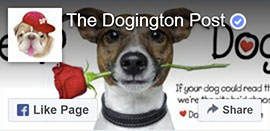“This post contains affiliate links, and I will be compensated if you make a purchase after clicking on my links.”
Feeding your dog the right food is crucial for their health and happiness. At DogingtonPost, we know how challenging it can be to navigate the world of canine nutrition.
Enter the dog food nutrition calculator – a powerful tool that takes the guesswork out of meal planning for your furry friend. In this post, we’ll show you how to use this handy calculator to ensure your pup gets the perfect balance of nutrients.
What’s a Dog Food Nutrition Calculator?
The Power of Precision Feeding
Dog food nutrition calculators revolutionize pet care. These online tools determine the exact amount to feed your dog based on their specific needs. They use data about your dog – weight, age, and activity level – to calculate the ideal food portions.
How These Calculators Function
When you use a dog food nutrition calculator, you input information about your furry companion. This includes their current weight, ideal weight, age, and activity level. Some calculators also request breed information. After you enter these details, the calculator processes the data and provides a recommended daily calorie intake.
The Importance of These Tools
A nutrition calculator eliminates guesswork in feeding your dog. It’s not just about preventing overfeeding – it’s about providing your dog with the right amount of nutrients they need to flourish. The Association for Pet Obesity Prevention reports that 59% of dogs in the US are overweight or obese. A calculator can help prevent this widespread health issue.
Essential Nutrients to Monitor
Understanding key nutrients in dog food is vital when using these calculators. Protein supports muscle development and repair. Fats supply energy and aid nutrient absorption. Carbohydrates offer quick energy, while fiber supports digestion. Vitamins and minerals contribute to overall health.

The American Kennel Club stresses the importance of balanced nutrition for dogs. A good calculator helps you achieve this balance, ensuring your dog receives the right mix of these essential nutrients.
Limitations and Considerations
While these calculators prove incredibly useful, they don’t offer a one-size-fits-all solution. Factors such as health conditions or pregnancy can affect nutritional needs. It’s always advisable to consult with your vet about your dog’s specific dietary requirements.
Now that we understand what dog food nutrition calculators are and why they matter, let’s explore how to use them effectively to tailor your dog’s diet.
How to Master Dog Food Nutrition Calculators
Gathering Essential Information
To use a dog food nutrition calculator effectively, you must collect accurate data about your dog. You need your dog’s current weight, ideal weight (if different), age, and activity level. Some calculators also request breed information. Precision matters – small differences can impact the results.

For weight, use a reliable scale. If your dog is too large for a home scale, many vet offices allow free use of their scales. Activity levels typically range from sedentary to highly active. Be honest about your dog’s lifestyle – overestimating activity can result in overfeeding.
Inputting Data and Selecting Food
After you collect your dog’s information, input it into the calculator. Next, select the type of food you use. This step is vital because different foods have varying caloric densities.
Check the nutritional information on your dog food package. You must input the calories per cup or kilogram. If this information isn’t readily available, contact the manufacturer or consider switching to a brand that provides clear nutritional data.
Interpreting Results
The calculator will provide a recommended daily calorie intake and often a suggested amount of food. This recommendation serves as a starting point, not a rigid rule.
The American Animal Hospital Association recommends you monitor your dog’s weight and adjust portions as needed. If your dog gains or loses weight unintentionally, gradually adjust the portion size by about 10% and reassess after a few weeks.
Avoiding Common Pitfalls
Many pet owners make mistakes when they use nutrition calculators. One frequent error is to forget to account for treats. Treats should make up no more than 10% of a dog’s daily caloric intake.
Another mistake is to not recalculate as your dog ages or their activity level changes. Puppies and senior dogs have different nutritional needs, as do dogs recovering from illness or injury. Regular recalculation ensures you meet your dog’s changing needs.
Lastly, don’t forget to factor in wet food if you mix it with dry kibble. Wet food often has fewer calories per volume, so it’s important to adjust portions accordingly.
Moving Beyond Basic Calculations
While mastering the use of dog food nutrition calculators is a significant step, it’s just the beginning of optimizing your dog’s diet. The next chapter will explore how to tailor your dog’s diet using these calculator results, addressing specific health concerns, and combining different types of food for optimal nutrition.
How to Fine-Tune Your Dog’s Diet
Adjust Portions for Optimal Health
After you obtain the recommended daily calorie intake from the calculator, put that information into practice. Start by measuring the suggested portion size for each meal. Use a kitchen scale for accuracy (eyeballing portions often leads to overfeeding).

Monitor your dog’s weight weekly. If you notice unintended weight gain or loss, adjust the portion size by 10% and reassess after two weeks. The calculator provides a starting point, not a fixed rule.
Address Health Concerns Through Diet
Nutrition plays a key role in managing various health conditions in dogs. For example, dogs with kidney disease often benefit from a diet that contains less protein, sodium, and phosphorus, and increased omega-3 fatty acids, compared to normal maintenance adult dog food.
If your dog has a specific health concern, consult with your veterinarian to determine how to modify their diet. You might need to adjust the protein, fat, or fiber content of their food. Some conditions may require prescription diets, which you can factor into your nutrition calculations.
Mix Wet and Dry Food
Many dog owners combine wet and dry food for variety and added nutrition. When you do this, it’s essential to adjust your calculations to account for the different caloric densities of wet and dry food.
For example, if your dog needs 1000 calories per day and you want to replace a portion of their dry food with wet food, you need to consider that dry food has more calories than wet food per serving. Always check the calorie content on the packaging of both food types to ensure accurate portioning.
Introduce Changes Gradually
When you make dietary changes, introduce them gradually over 7-10 days to avoid digestive upset. This approach allows your dog’s system to adapt to the new food or portions without discomfort.
Monitor and Adjust
Regular monitoring is key to successful diet fine-tuning. Keep track of your dog’s weight, energy levels, and overall health (including coat condition and stool quality). These factors can indicate whether your current feeding plan is working or if further adjustments are necessary.
Final Thoughts
Dog food nutrition calculators revolutionize pet care by eliminating guesswork in feeding. These tools provide precise recommendations based on your dog’s unique characteristics, helping prevent overfeeding and obesity. We advise using a calculator twice yearly or when you notice significant changes in your pet’s weight or behavior.

Professional veterinary advice remains irreplaceable, especially for dogs with specific health concerns or dietary requirements. Your vet can offer personalized recommendations based on your dog’s health history. Don’t hesitate to consult them when considering major changes to your dog’s diet.
We at DogingtonPost want to help you make informed decisions about your dog’s care. Our platform offers information on dog nutrition, health, and lifestyle to complement insights from nutrition calculators. You set your furry friend up for a happy, healthy life when you combine these resources with regular vet check-ups.


















